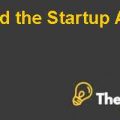Introduction
Biopure Corporation was founded in the year 1984. The company has been a privately owned pharmaceutical firm. The company’s two major products are Hemopure for Human Market and the Oxyglobin for the Veterinary Market. Both the products are the blood supplements and produced from the same material, the Cattle Blood.
The production of Biopure is quite different to what the competitors in the market offer. Oxyglobin has been one of its kinds in the market. The two products offered by Biopure have their respective competitive advantage of being low cost (John, 1999).
Oxyglobin has already achieved the FDA approval and the company has been planning about its prices, release dates and the effect of its introduction in the market.
Therefore, it is recommended to launch Oxyglobin first and then go for the Hemopure when it is released and ready for the market launch. The marketing strategy should be devised as such that both the products are properly differentiated.
Problem Statement
The major problem that has been identified in the case “Biopure Corporation” has been to decide the best time to launch and introduce Oxyglobin. Moreover, the company has to decide the launch strategy of Oxyglobin where it has to ensure that the potential of the Hemopure is also not jeopardized (John, 1999).
Marketing Analysis
Biopure Corporation has been operating in two markets, one is the Veterinary market and the other is the Human market. In the human blood market, more than 14 million units of the Red blood cells are actually made available through his donations of blood from different people.
Nonetheless, there is also a periodic shortage of Red Blood Cells, due to their short shelf life and the low rate of blood donations. In comparison to the overall donation supply, the overall demand has been rising in the upcoming time which can actually increase the overall demand for the substitutes of the blood.
The demand for the red blood cell for the chronic anemia has also been expecting to remain rather stable whereas in the case of the actual blood loss, this amount is expected to increase. In case of donation of the red blood cells, it also includes some limitations where the matching of blood is also necessary, the donated bloods’ reduced oxygen carrying efficiency, partial shelf life, refrigeration and the risk of disease transmission is needed also. This also helps min making the market favorable for the substitutes.
The blood transfusion in the overall Veterinary markets has been quite infrequent in the past because it has been due to the inadequacy of the blood supply in the market. Along with this, in comparison to the human markets there have been only a few animal blood banks in the market. The single source of the blood for most of the veterinary blood needs to be the donor animals which are held at the practice for the donation of the blood. This has, therefore, been the cost the service for the $50 to $100 (John, 1999).
Thus, with the lack of the time and the overall resources and the type of donor and the blood recipients, the 84% of the veterinary doctors have been dissatisfied with the available blood transfusion alternatives. Moreover, the survey of 285 veterinarians and the 200 dog owners have also revealed the time the customers have been willing to pay rather higher prices for the products.
Biopure Corporation has two competitors in line for the human blood substitutes. Baxter International has been the leader in the market of blood related medical products. The blood substitutes for the Baxter International have been named as the “Hem Assist”.
Biopure Corporation Case Solution
The product has been made of outdated red blood cells of the human blood where the production cost is $50 million. The overall raw material cost for Baxter is $8 per unit. The product is also stored at less than four degree until it is used. However, Baxter is considering charging $600 to $800.
Next to Baxter comes the NorthField Laboratories, and its product “Polyheme” is very similar to the “Hem Assist”. It is also produced by the outdated RBC of the human blood and costs NorthField $70 million.
It has been storing properties, which are also same as the HemAssist and the raw material costs are $26 per unit. Polyheme was at the Phase three clinical trial in 1998 and was expected to launch in late 1999. The expected price of Polyheme is also $600-$800













